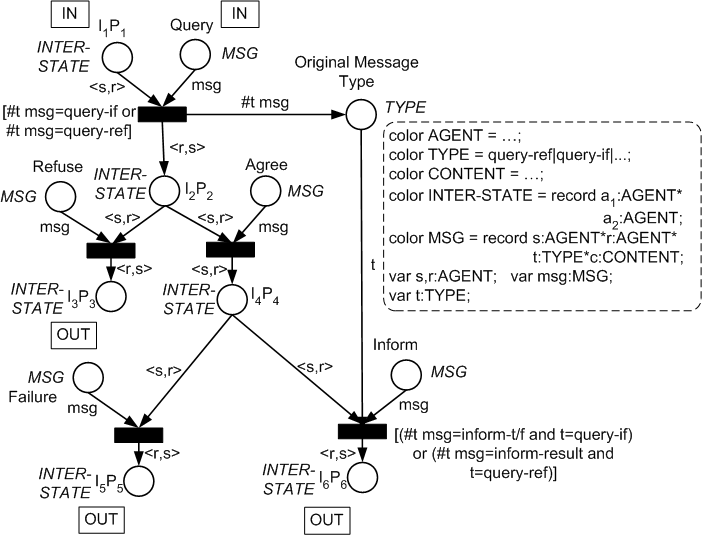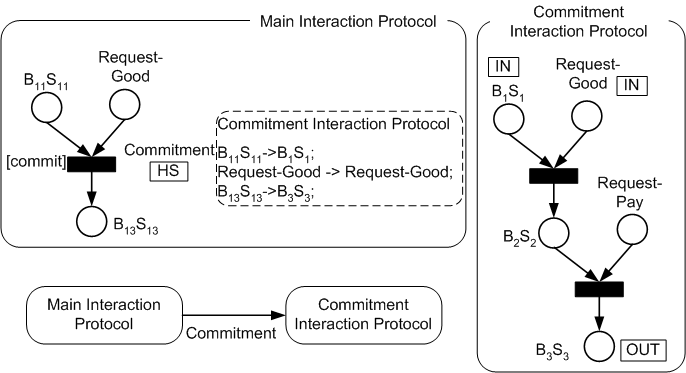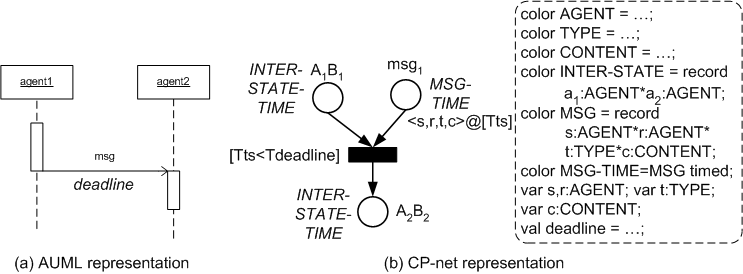
| Representing Multiple Conversations (of Same Protocol) | ||
| Multiple CP- or PT-nets (Proposition 3) | Using color tokens,
single CP-net (Proposition 4) | |
| Individual States (Proposition 1) | Space: O(MRC) | Space: O(MR+ClogC) [ Cost1999, Cost et al.1999, Cost et al.2000, Lin et al.2000, Cranefield et al.2002, Purvis et al.2002, Ramos et al.2002, Mazouzi et al.2002] |
| Joint States (Proposition 2) | Space: O(MC) [ Nowostawski et al.2001, Poutakidis et al.2002] | Space:
O(M+ClogC) This paper |




















